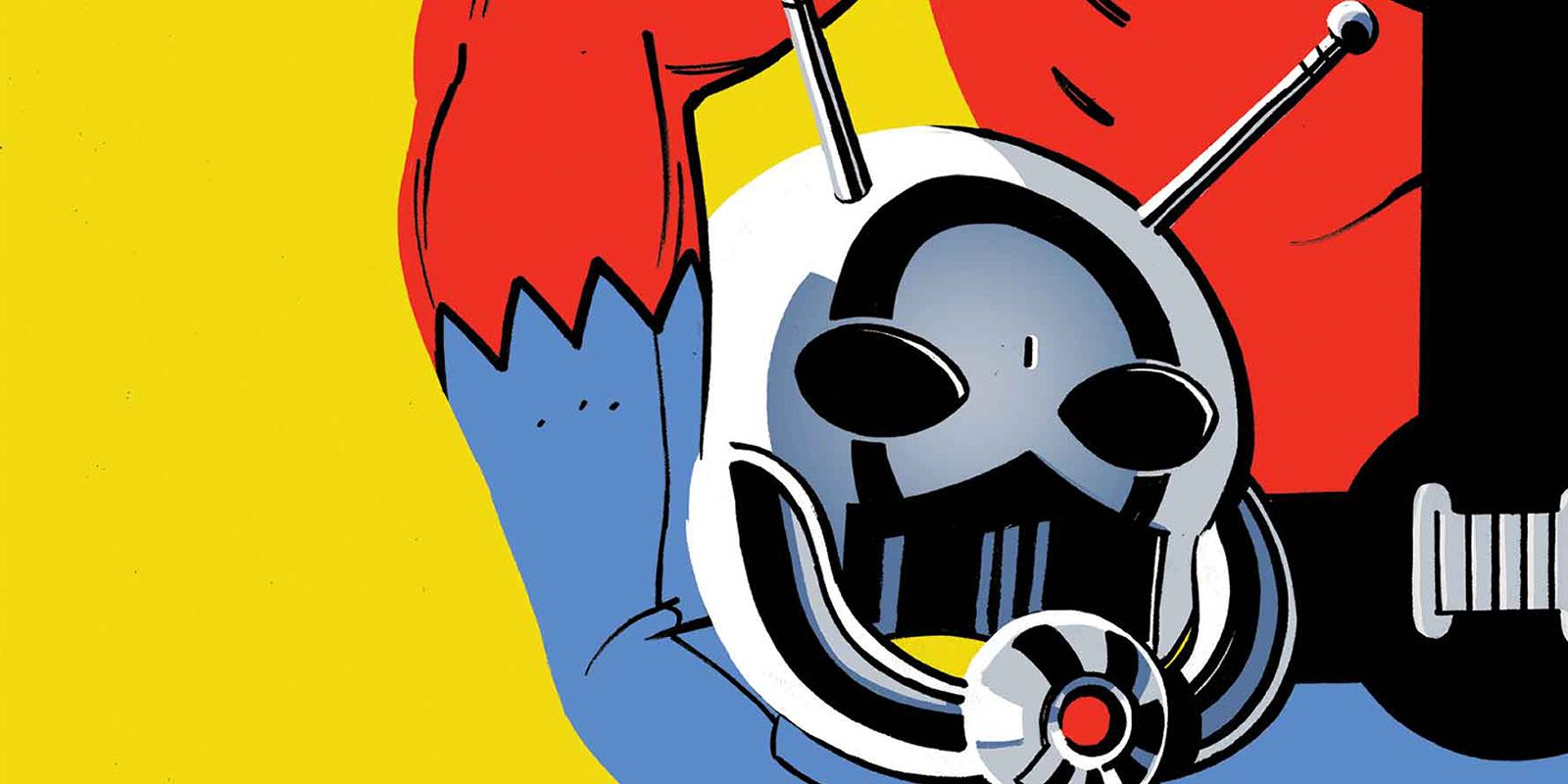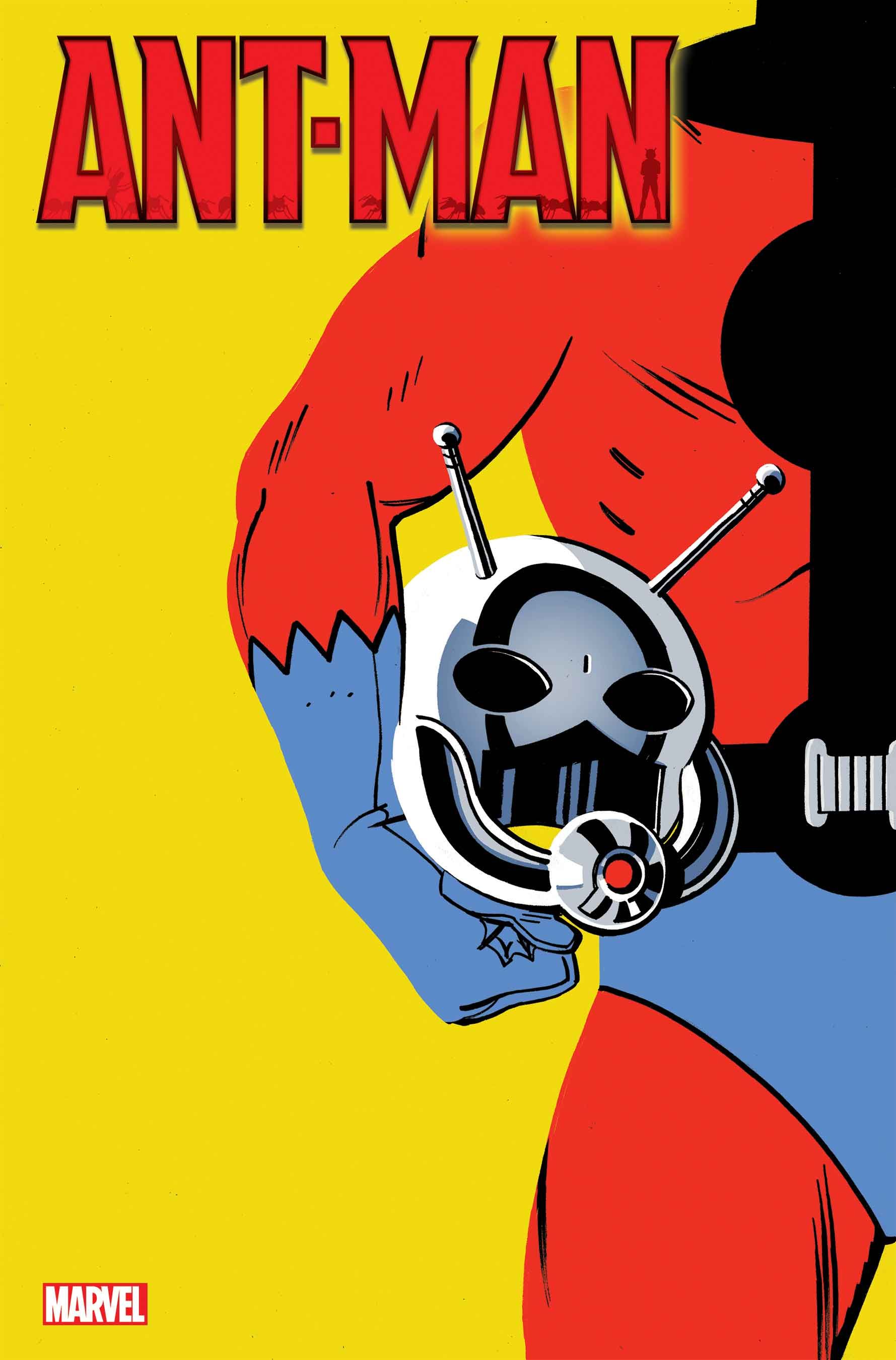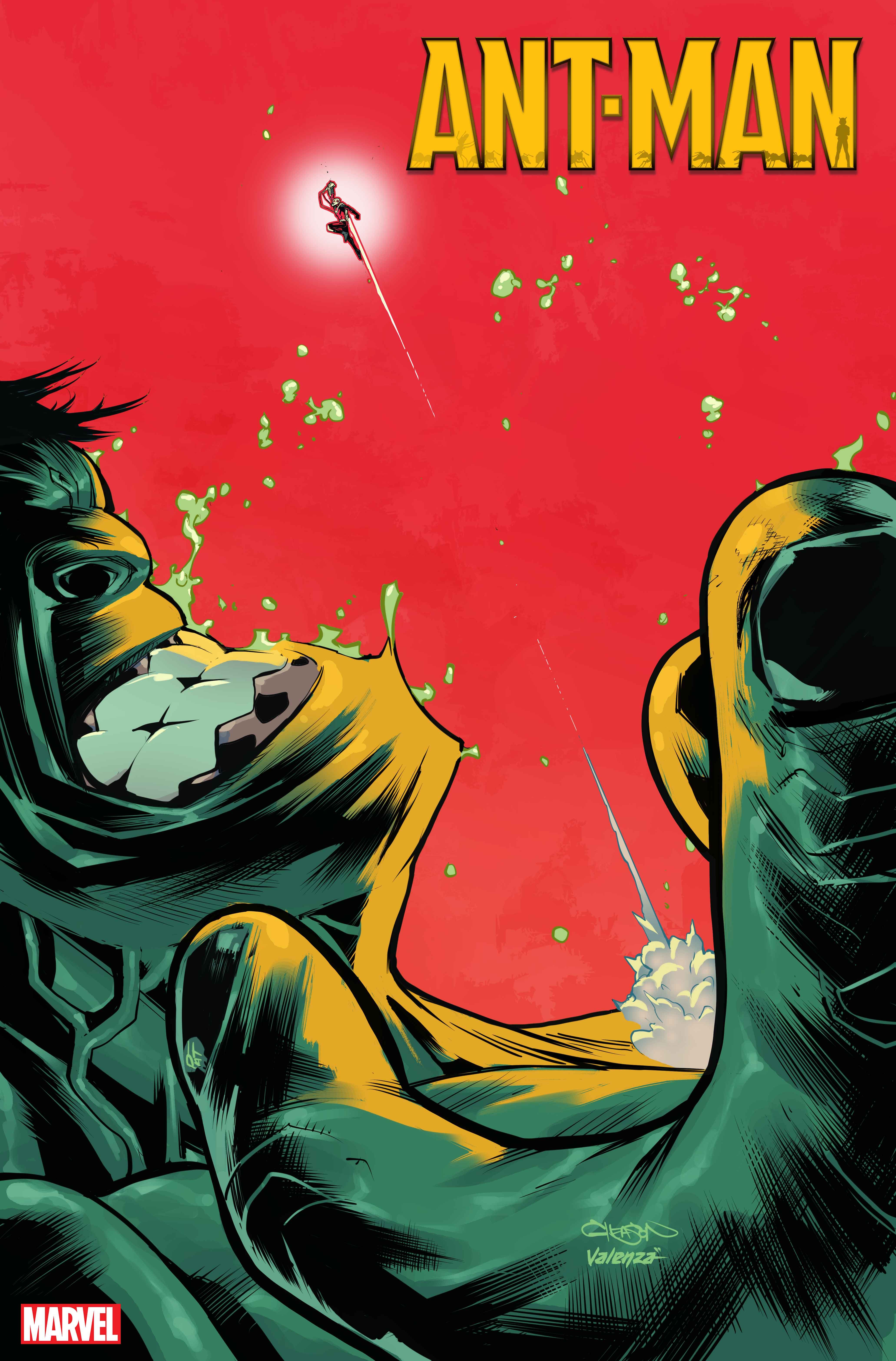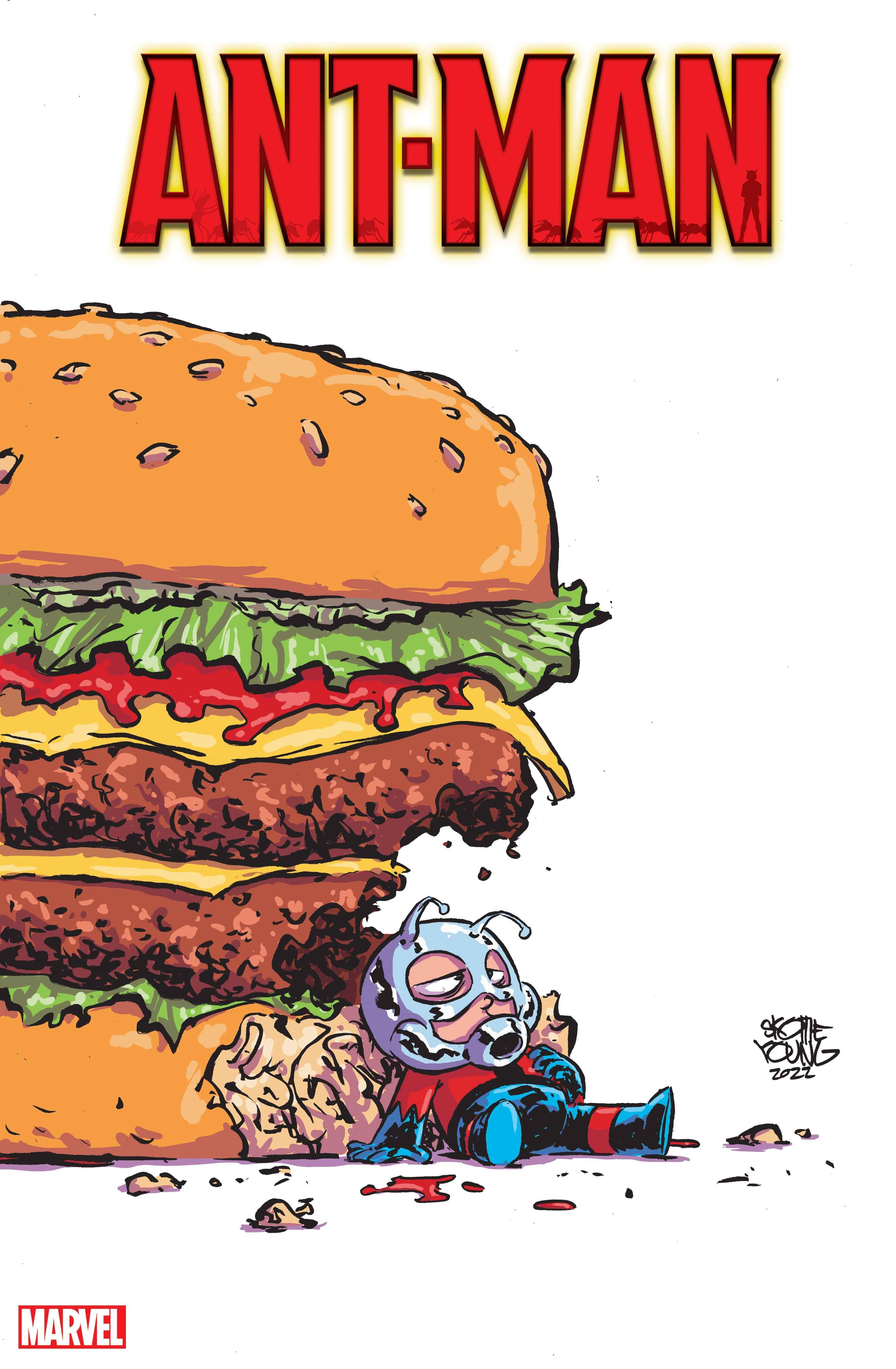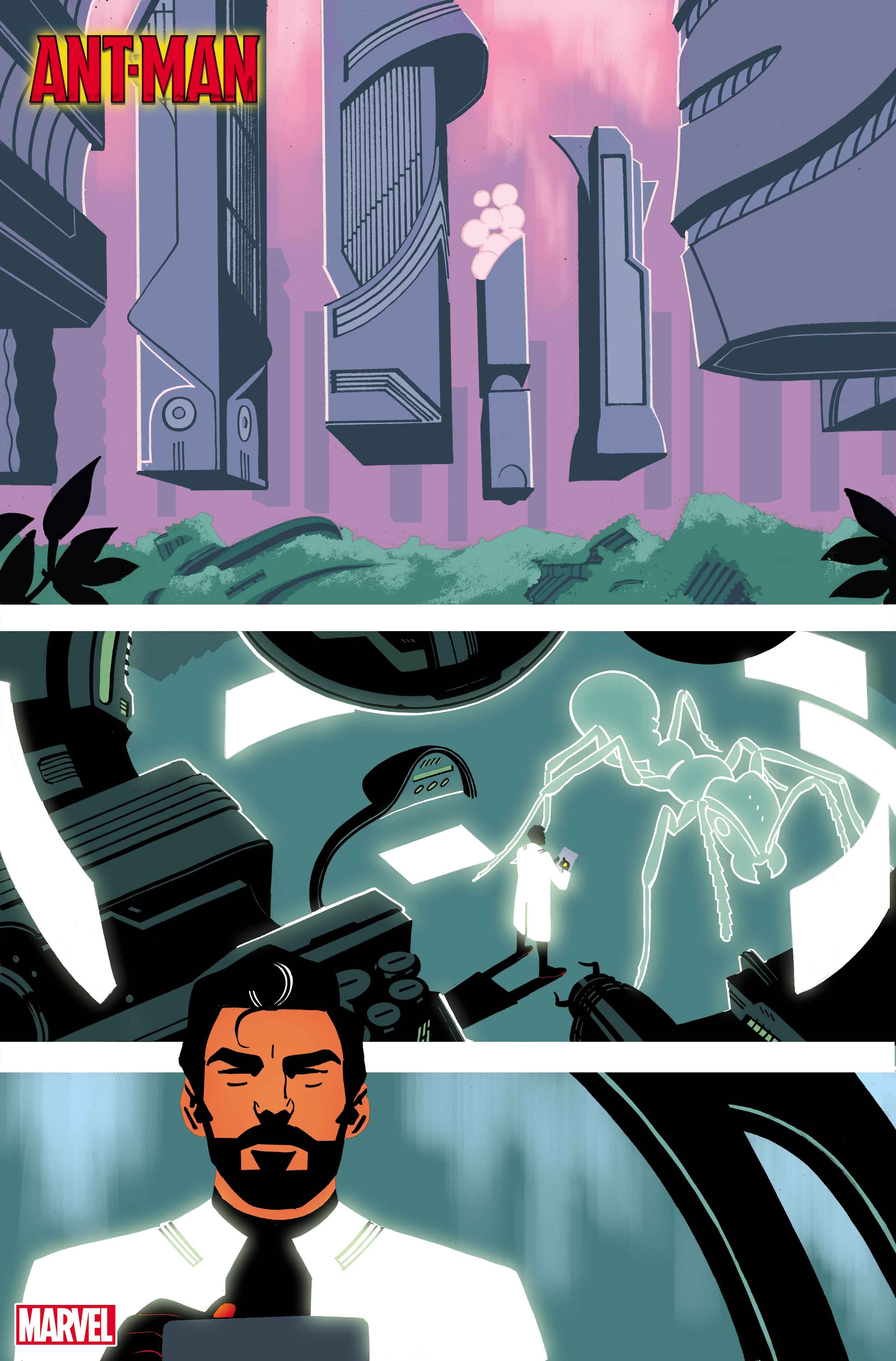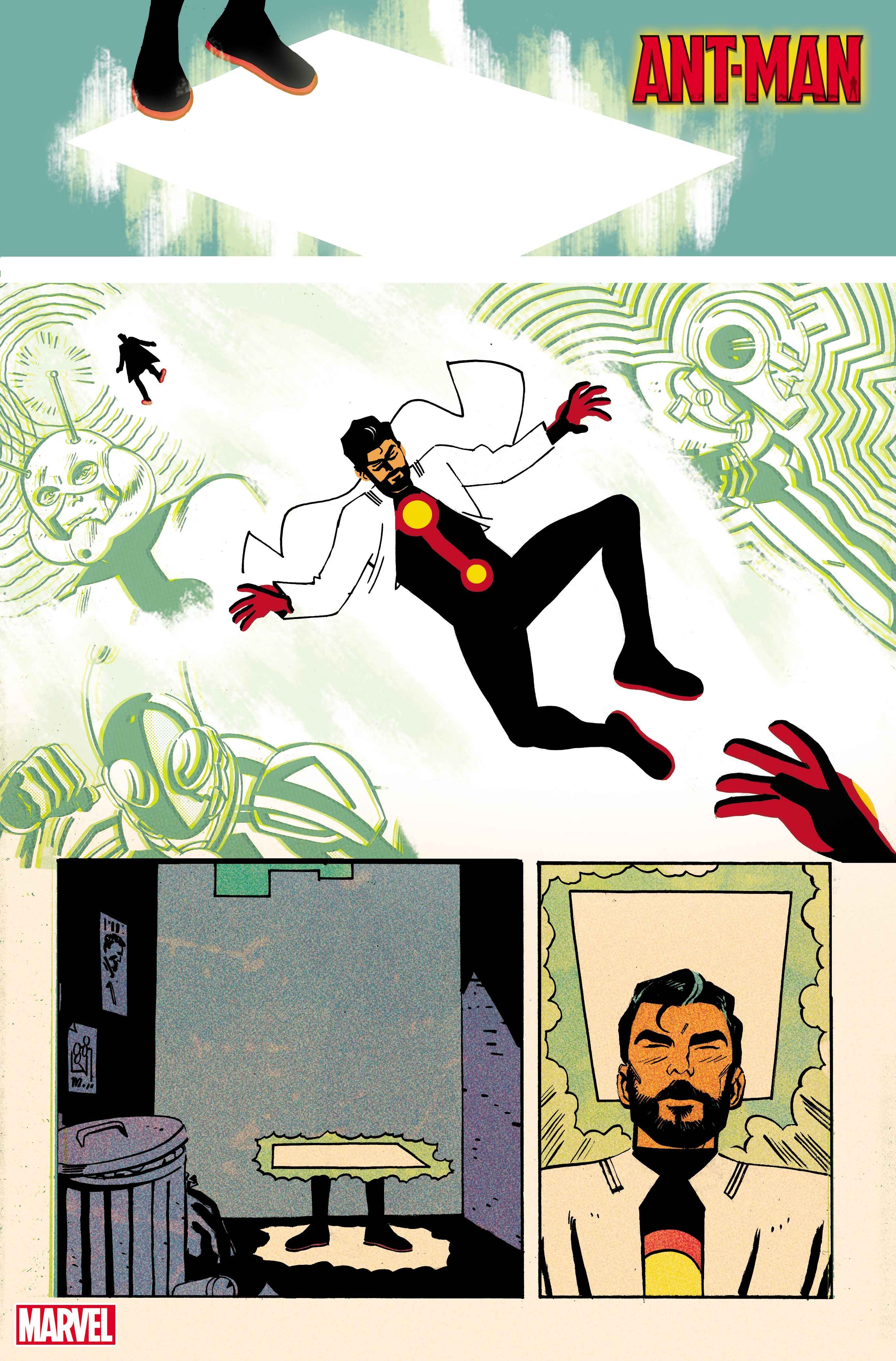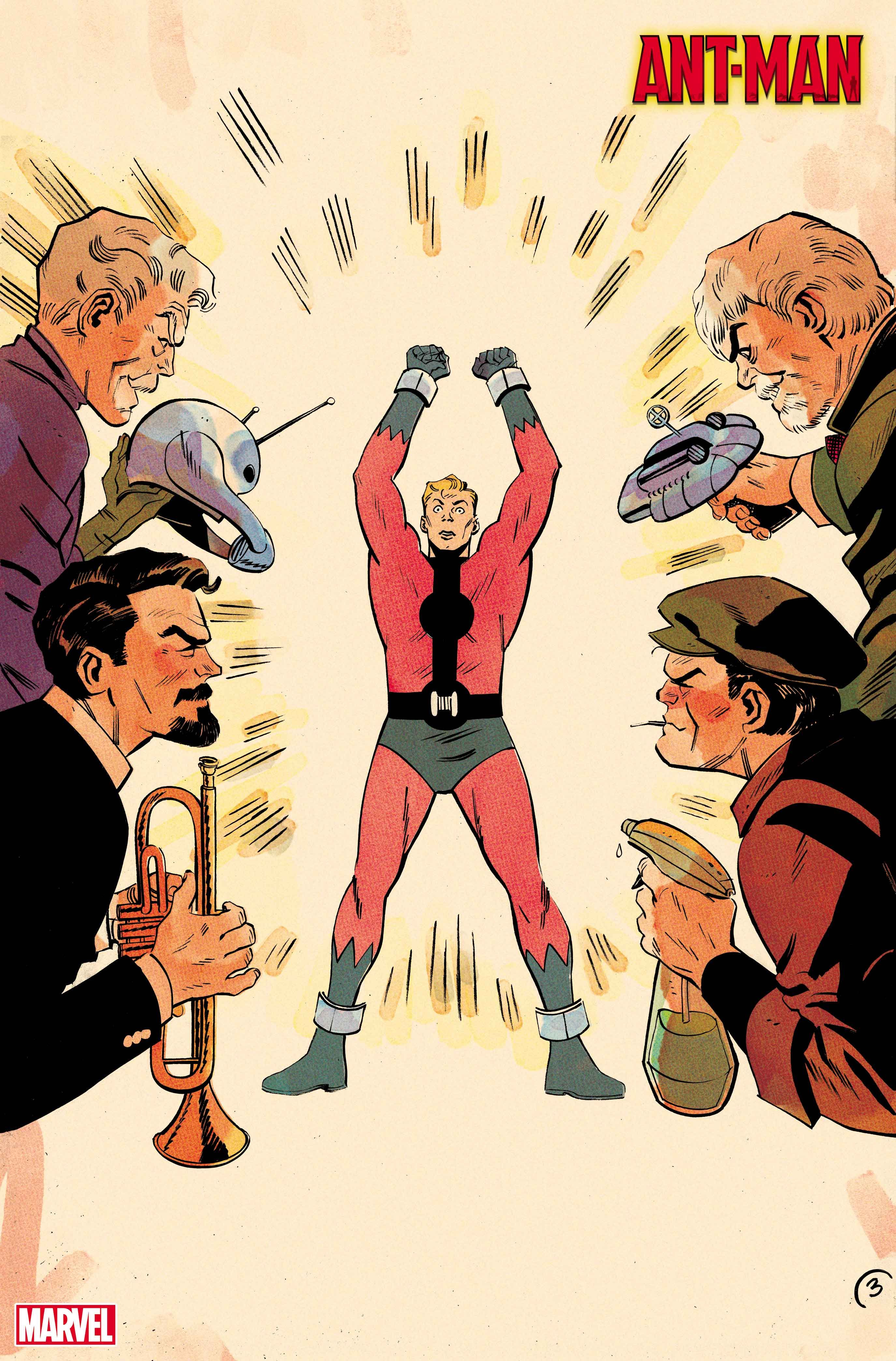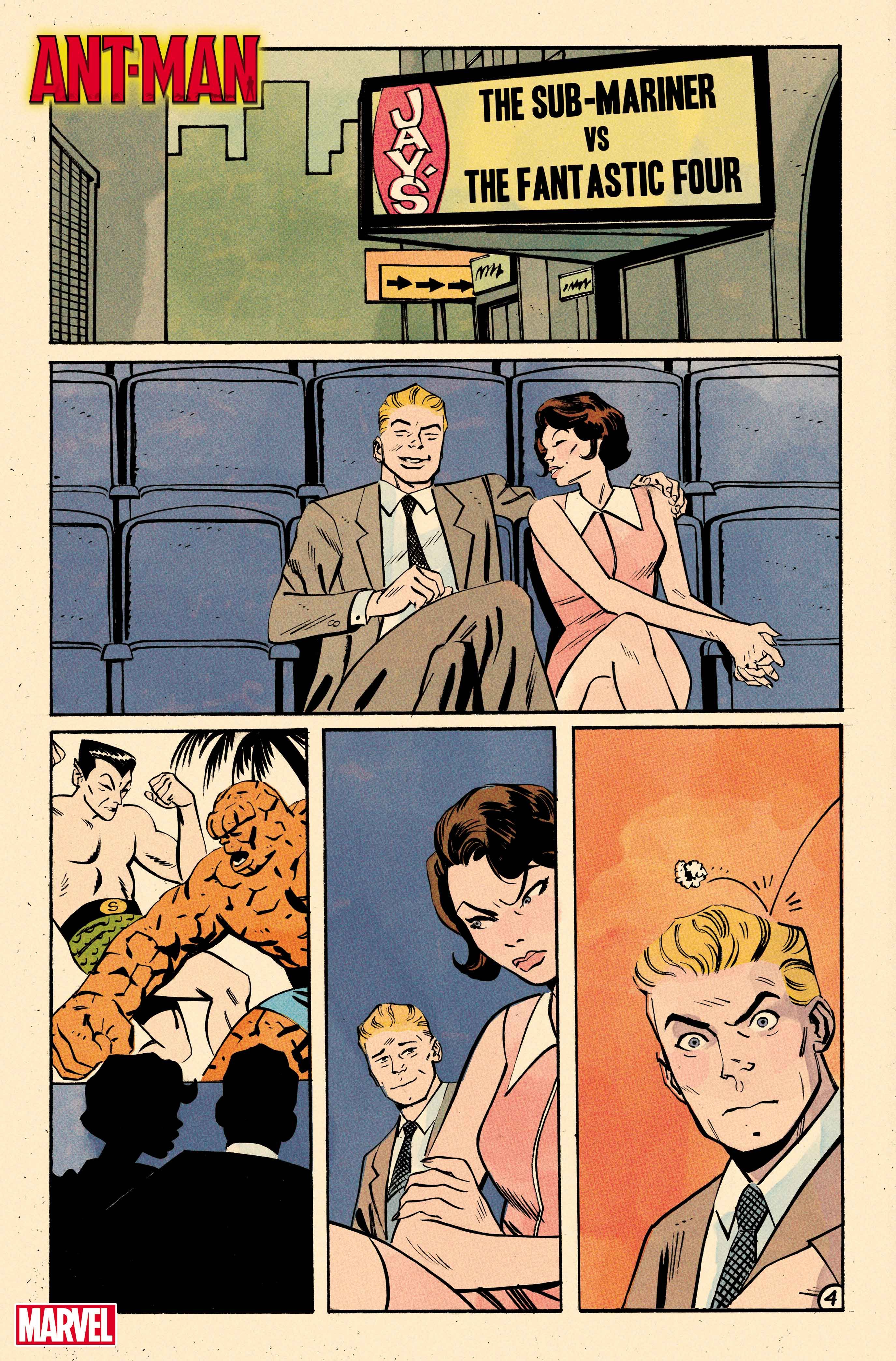In 1962's Tales to Astonish #35, creators Stan Lee, Jack Kirby, and Larry Lieber introduced readers to a different kind of superhero, one who became larger than life by shrinking down to almost microscopic size. His name was Ant-Man (AKA Hank Pym), and he used his intellect, size-changing powers and ability to communicate with insects to fight crime. In 1979's Marvel Preview #40, David Micheline, Bob Layton, and John Byrne ushered in the age of the second Ant-Man, Scott Lang, who stole Pym's equipment and original heroic identity to save his daughter. Both Lang and Pym were flawed heroes, but in 2006's Irredeemable Ant-Man #1, writer Robert Kirkman and artist Phil Hester introduced readers to their titular character, Eric O'Grady, one of the most troubled people to wear the Ant-Man helmet. After O'Grady died and his L.M.D. copy became the villainous Black Ant, Scott Lang reclaimed the Ant-Man mantle.
Now, Writer Al Ewing and artist Tom Reilly are teaming up to travel back in time through the character's long and complicated history. Their four-issue Ant-Man miniseries is scheduled to kick off this July. CBR recently spoke with Ewing about the book, his take on the Ant-Men of the past, present, and future -- and the trouble he has in store for his titular characters. Ewing also shared an exclusive look at some of Reilly's interior pages as well as variant covers by Patrick Gleason and Skottie Young.
CBR: With Ant-Man, you're delving into the history of the titular character and the various people who held the identity. What made this a compelling assignment?
Al Ewing: It's the most common answer -- I'm a fan. I've been a fan of the character from way back before I even got work at Marvel. But when I say a fan of the character, I have to qualify with which Ant-Man I'm talking about and when. I mean Hank Pym and a particular '60s-era Hank Pym from those old black-and-white Essentials collections that printed 500 pages of old comics in these big black-and-white phonebooks. Hank had a run of stories that were wonderful one-offs having all kinds of fun with the concept of shrinking down and commanding ants. They felt much lighter and more whimsical than other stories of the era -- they were almost camp.
Of course, they couldn't last. The Wasp came in, and that was great because we got to add a little Nick and Nora Charles to it, completely inappropriate as that was, [to] have a pair of goofballs instead of just one. Then Hank became Giant-Man, and, okay, it's starting to get a little... and then Giant-Man got a new hat... and then Sub-Mariner took his spot, and from there, it's a pretty well-charted course to ignominy and ruin.
So I am a huge fan of this one, tiny, fleeting instant of the original Ant-Man, and I thought it'd be fun to do a riff on that. Everything kind of built itself up from there, from the idea of revisiting old eras of Ant-Man to tell a new story that's big and wild and far-reaching. And as a result, I'm now a fan of all the other Ant-Men, too.
For this story, you're adding to the Ant-Man legacy by creating an Ant-Man of the future. What can you tell fans about this character? How are they similar and different from some of their predecessors?
Is an ant still an ant in the 24th century? Or on a planet that's been blighted by ecological disaster and killer robots? What does Ant-Man look like when there aren't any ants? What do comics look like when there aren't any comics? All those questions will be answered as we return to a Marvel future I've done a tour of duty in before -- and find the Ant-Man of the future facing off against the greatest enemy of the Ant-Men of the past!
What can you tell us about the action and structure of Ant-Man? It seems like a time travel tale that allows you to play with the feel of the eras the various Ant-Men operated in.
Each issue is set in a different Ant-Man era -- we're not doing it in strict order of the Ant-Men, because we wanted the modern era to feature Scott Lang as he's the Ant-Man of right now. But we are doing an issue for Hank Pym in the '60s, an issue for Eric O'Grady in the '00s, an issue right now with Scott Lang featuring up-to-the-minute continuity, and an issue set in the far future with the Ant-Man of 2549, Zayn Asghar. I've done my best to recreate -- or predict -- each of those eras of comics, and Tom Reilly's been throwing himself right into it along with me. If you're a fan of Ant-Man and his long legacy, I'm pretty sure each of these issues will bring a smile to your face, and you'll have fun watching how each of the Ant-Men turns up in the others' issues.
What else can you tell us about your take on the original Ant-Man, Hank Pym? Which aspects of his character are you especially interested in exploring?
As I mentioned, I'm heavily influenced by the early stories when it comes to Hank, and that's definitely what I want to play up. I honestly don't know if it's possible to redeem Hank or if we should even want to, but I do think he's the victim of a weird kind of meta-commentary. He became Giant-Man because Ant-Man obviously wasn't cool enough, and then that wasn't quite there either, so he got a new hat, and then he got even bigger but with a problem. Then each evolution comes with ramping up his problems, and his problems become about not being enough as a character in-world as well as out of it, and that leads to him committing an act of domestic violence while building a robot to attack his friends and at that point, the casket is pretty much sealed.
So I guess when I think of the Hank Pym Ant-Man, I'm thinking of Hank before the editorial dissatisfaction with him really started to crawl into his guts. Marvel might not have been happy, but Hank was -- he was just fine talking to ants, solving small-time crimes, and having a ball with his sidekick-slash-maybe-more-question mark??? He was fine. He was happy. If I could bring Hank Pym back into the modern Marvel Universe, that'd be the Hank I'd bring back in. He'd be totally redundant, obviously, but this time he wouldn't care.
The second Ant-Man, Scott Lang, is a flawed individual like his predecessor and successors, but he's unique in that his reasons for becoming and often staying Ant-Man are tied to his family. How do you think having a family affected and changed Scott's trajectory as Ant-Man?
Scott is narratively grounded in a way Hank wasn't. Hank wasn't created with a "Here's The Thing About This Fella" -- he was just one more in a procession of scientists who defied the forces of nature and learned an exciting lesson about it. So they had to add the "Here's The Thing" onto him and then try again and again. But with Scott, they nailed it -- he's a rogue with a heart of gold and a daughter he does everything for.
What other Marvel hero started off with a kid? At the time, he was pretty unique. Even when his daughter was dead, "dad doing his best" was so baked into him that it gave him the power to beat up Doctor Doom (while also attempting to trash Doom's mythos -- much harder to do, and Scott's come the closest aside from Doom himself.) Anyway, as a result of this, Scott can fall very far in life, but that only makes him more lovable, and the movies give him a certain degree of immunity from crossing any lines he can't return from.
The most flawed of the Ant-Man is, of course, the "Irredeemable" one, Eric O'Grady. What's it like writing Eric? Which aspects of his character do you find intriguing?
Writing "original flavor" Eric is an interesting time-travel exercise -- I had a great time for an issue, and hopefully, you will too. But the character really opened up for me when I started thinking about how he is now, or rather how his replacement is. Black Ant is an L.M.D that behaves like a human being, a specific human being, except he's a worse guy than his original because Eric died a hero and Black Ant is still a bad guy, almost as if he's less capable of real change. That's some really potent, Philip K Dick style territory -- and hey, Philip K Dick wrote a story about an android programmed to believe he was a human being, and he titled that story "The Electric Ant." And whenever a synchronicity pops up while I'm writing a comic, I know it's going to be a good one. So I guess I'll say that writing Eric was fun, but writing Black Ant is what really pushes my buttons.
What can you tell us about the supporting cast of Ant-Man? Will we see characters like Janet Van Dyne or Scott's daughter, Cassie Lang?
Oh, of course! It wouldn't be a Hank story for me without Jan, and I love Scott and Cassie's dynamic right now. So they're both big parts of their respective eras. Eric doesn't really have a sidekick in the exact time period I'm writing him, but Maria Hill makes an appearance, as does Criti Noll. (Remember her? We'll catch you up, don't worry.)
Jan's turned out to be a real favorite of mine, especially '60s Jan -- or rather, my interpretation of '60s Jan. I've got a little Emma Peel in there, a little Nick and Nora -- Hank's the big science square who'd rather be working, she's the switched-on fashionista who'd rather be on the town, together they fight crime. It's a TV show that writes itself, and once you've written a few pages of it, you realize you could probably do it without Hank, which is good news considering Hank's current circumstances. Anyway, she's on my list of "characters I want to write more of."
Ant-Man sounds like a series that allows an artist to do different things with almost every issue, and Tom Reilly is an artist with a knack for capturing multiple tones as well as drawing kinetic action and emotion. What's it like reuniting with him on this book?
Tom is wonderful. I couldn't ask for a better collaborator on this. I love his style, those gorgeous, clean, clear lines. Just impeccable all around. And on top of that, he seems to really enjoy experimenting with the styles of the past, incorporating them where necessary, creating new riffs on them, and even creating a futuristic take on his style for what's ahead.
And on this topic, I'll mention color artist Jordie Bellaire -- she jumped right into what we were doing on the color side, coming up with some incredible color choices for the "60s" issue that rhyme with what Tom's doing perfectly and will absolutely blow you away. I can't wait to see what she does with the rest.
Finally, what can you tell us about the villains of this book? Will we see some classic and new foes added to Ant-Man's rogues' gallery?
Mostly classic foes -- some very classic foes that we're meeting for only the second time, in some cases -- and the main villain of the piece is an arch Ant-foe that we haven't seen for a little while and one that I've written before. So take that as a strong hint.
I want to thank everyone for picking this up -- we've put a lot of work in to make this a real celebration of Ant-Man's past, present, and future. I'll even say that if you're not a fan of Ant-Man right now, you might just become one after we're done. I'm confident in saying that this book is going to be a good time for anyone picking it up.
Ant-Man #1 is due out on Wednesday, July 27, from Marvel.

